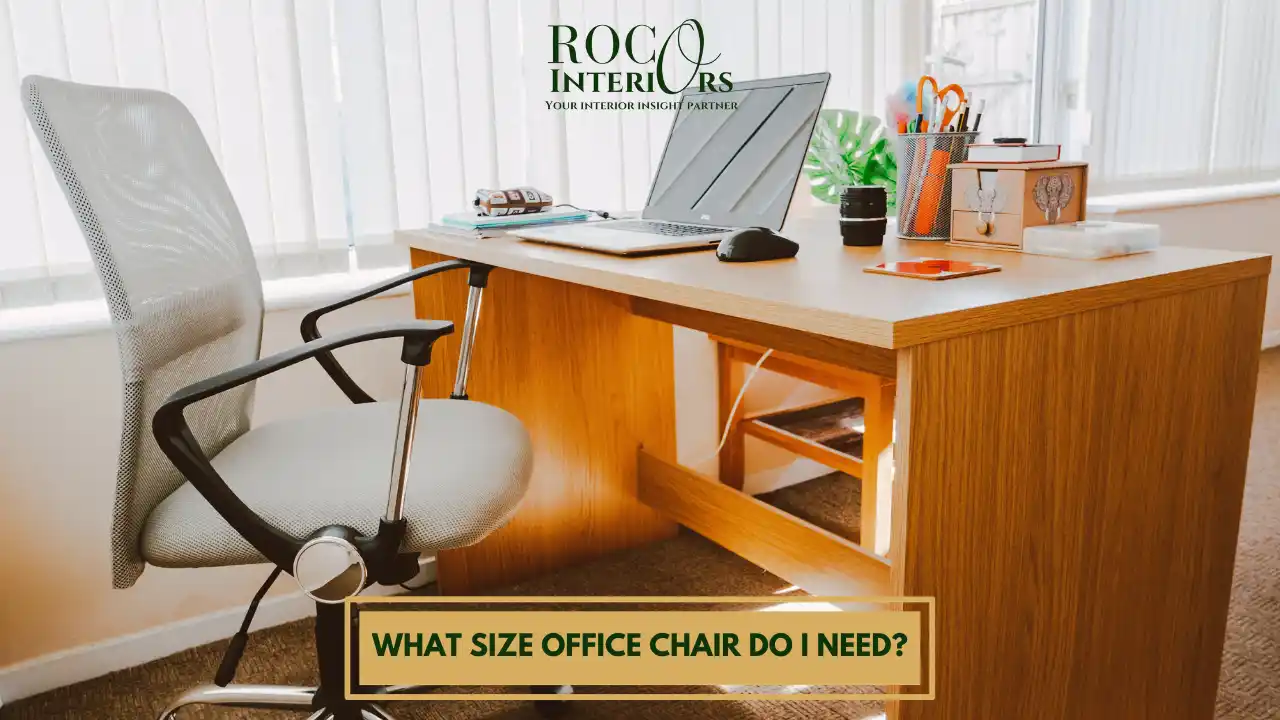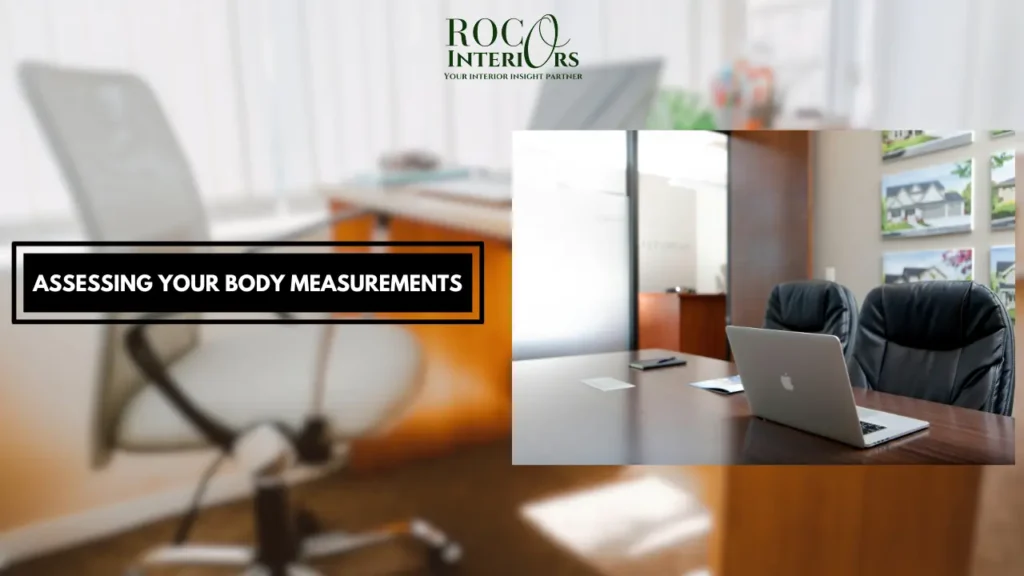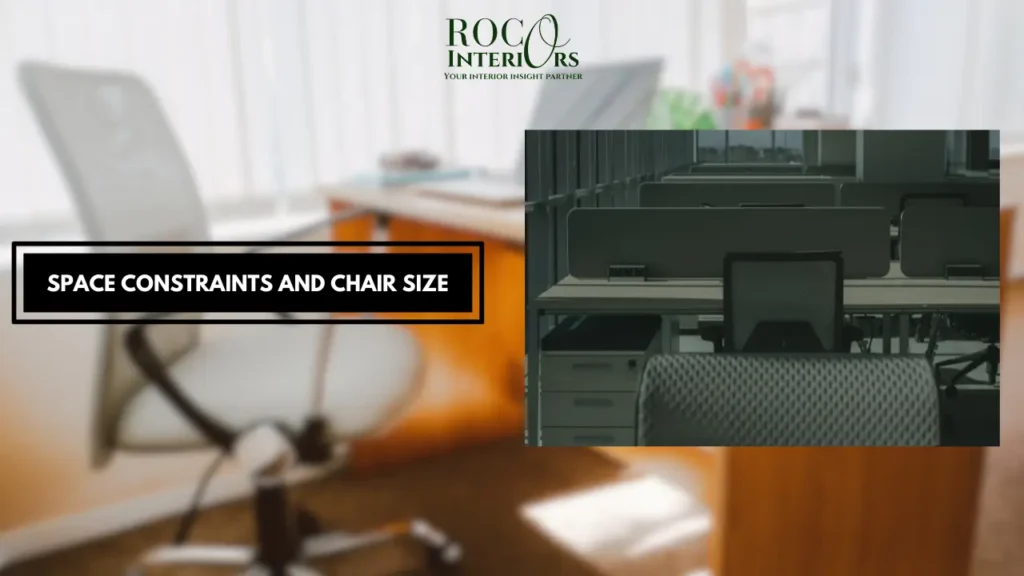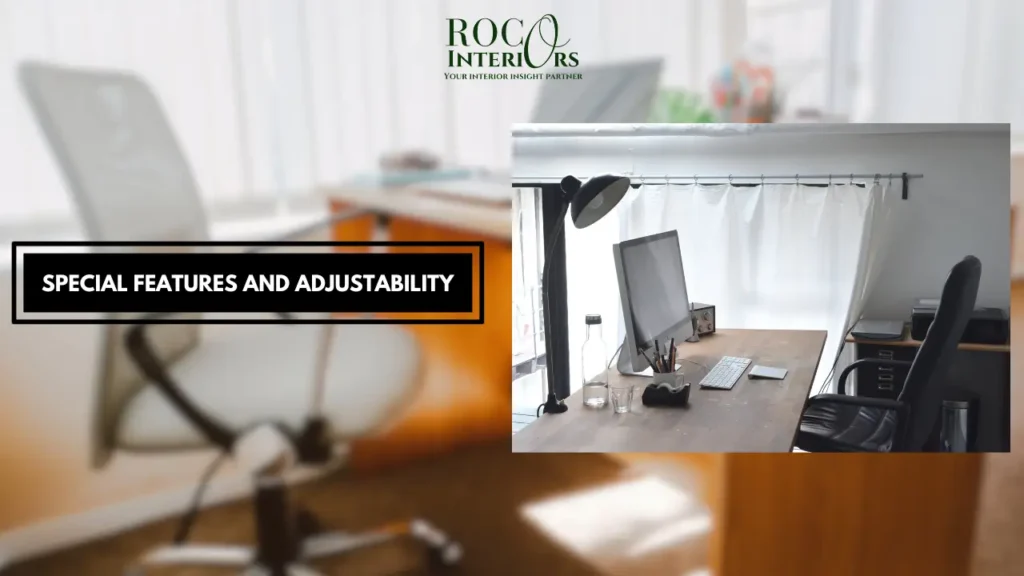What Size Office Chair Do I Need?


Haseeb Ali
Furniture Guide Expert
Table of Contents
Selecting an optimally sized office chair is crucial for comfort and proper workplace ergonomics over long workdays spent sitting. But between factors like body measurements, workspace dimensions, sitting habits, adjustable features and intended chair use, it can be complicated to determine ‘What Size Office Chair Do I Need?’ that works best for your needs.
This comprehensive guide takes you through the key considerations around office chair sizing to help match your body’s dimensions to a chair that offers ideal support. We’ll cover common chair adjustments that allow chairs to fit varying builds. Plus solutions for constrained spaces and must-have ergonomic accessories for enhanced comfort.
Understanding Chair Dimensions
The overall size of an office chair depends first on the main seated dimensions. Seat Height refers to the vertical distance from the floor to the front seat surface. Look for height adjustability within a 16 to 21 inch range. Tall users exceeding 21 inches may need specialty chairs.
Seat Width ranges between 20 to 26 inches across. Measure hip and thigh width while seated to identify ideal span. Chairs under 20 inches can feel cramped. Seat Depth averages 15 to 17 inches. This forward/back length should match behind-knee to tailbone measurements. Seat pans too long or short increase strain.
Backrest Height typical ranges from 16 to over 30 inches for mid to high back chairs. The lumbar curve should align with your natural spinal curve.Considering these key seated zones relative to body measurements results in better overall chair size selection and adjustability.
Assessing Your Body Measurements

Take the following body measurements either seated or standing to compare with chair dimensions. Knee to Heel Length while seated indicates needed seat depth so knee comfort isn’t compromised. Avoid seat edges pressing back of knees. Hip Width while seated provides needed seat width minimum. Measure across widest part of hips and outer thighs for good lateral support.
Lumbar Length when seated gives ideal backrest height, crucial for answering ‘What Size Office Chair Do I Need?’. Measure from seat bottom rear upwards to lumbar curve for back support alignment. Shoulder Width indicates desired space between armrests which should permit shoulders to relax without squeezing posture.
Transfer your measurements next to advertised chair dimensions to identify potential fit. Test assessed models in person with the same seated posture to confirm match.
Ergonomic Considerations
An correctly sized chair prevents strain only if key ergonomic comfort features are also included.:Lumbar Support matching the inward spine curve lessens back tension and hunching when sitting upright or reclining slightly.Cushioning distributes weight evenly across chair zones. Prioritize softer seating materials or removable cushions to ease prolonged pressure.
Armrests relax shoulders when placed slightly below elbow height while working, which is essential to consider when pondering, ‘What Size Office Chair Do I Need?’ Opt for chairs offering adjustable rests. Tilt Tension calibrated to body weight tensions the tilt mechanism appropriately for optimal movement and recline.
These ergonomic properties boost long term wellness by promoting neutral spine alignment and weight distribution for comfort during entire shifts sitting.
Space Constraints and Chair Size

The amount of floor space available alongside other existing furniture also affects viable options around chair size and footprint. Measure the open floor area around all workstations to determine dimensions the chair must fit inside when pulled close to the desk or table. Include knee and foot clearance underneath work surfaces in floor area calculations too.
In compact room arrangements, when considering what size office chair do I need, it’s advisable to consider low profile chairs with no arms and narrow, thin frames allowing sideways sliding under standard depth desks.
Alternately, furniture combinations that minimize or elevate storage pieces open up visual space while accommodating larger, fully featured chairs. Getting creative with layouts prevents having to compromise on critical chair functions purely for reduced footprint.
Special Features and Adjustability

Chairs that meet your preliminary sizing needs, crucial for determining ‘What Size Office Chair Do I Need?’, still only provide optimal comfort when they include customizable adjustments that allow you to fine-tune the fit. Key adjustability features to have for tailored support include seat height adjustment, adjustable armrest height, adjustable backrest tilt tension, adjustable seat depth and adjustable lumbar support, all essential for answering ‘What Size Office Chair Do I Need?’
Other desirable adjustments are headrests and neck pillows that can be positioned to support your head and neck at different tilt angles. Being able to manually adjust all these features or program memory presets allows you to tweak the chair until it perfectly matches your body’s proportions and preferred sitting position. Consider office chairs that also let you tilt and rock the seat and backrest, have swivel mobility and wheel around on casters for truly dynamic positioning while seated.
Having full control over these manual adjustments and programmable settings tailors any general office chair to your body to promote superb comfort and healthy posture alignment during long hours spent sitting.
Conclusion
Optimizing comfort and back health when office bound means taking the time to assess your anthropometry and sitting needs against key chair dimensions and adjustments during the selection process for ‘What Size Office Chair Do I Need?’.
Prioritizing ergonomic properties and seeking chairs specifically engineered for workforce physical wellness over basic seating cuts injury risks substantially. With some planning around space limitations and expected sitting duration too, you’ll soon enjoy tailored support in a properly sized chair.
FAQs
What Size Office Chair Do I Need?
The ideal office chair size depends on your body dimensions, specifically your height and weight, to ensure proper ergonomic support.
How do I know if a chair is too big or too small for me?
Signs of poor office chair fit include straining to reach the floor, seat edge pressing into backs of knees or legs, struggling to utilize armrests, or an ill-matched lumbar curve. Fidgeting, shifting often and general discomfort signal less than ideal dimensions.
What is the standard seat height for an office chair?
The average office chair seat height falls between 16 to 21 inches measured floor to seat front edge. Standard seat heights around 19 inches suit most users under 6 feet tall. However, tall or shorter users should look for low (16 inch) or high (20+ inch) seat heights for better thigh support.
How important is lumbar support in an office chair?
Proper lumbar support is extremely important for maintaining spinal health when sitting for extended periods. Chairs lacking contoured lower back support lead to poor posture, strained muscles and even herniated discs or pinched nerves over years of misalignment stress and compression.
Are mesh chairs better than cushioned chairs in terms of size and fit?
Neither design guarantees superior size and fit on its own. The back and seat construction does affect flexibility however – mesh adapts to more body shapes. Yet removable cushions allow chairs with firm frames to better match user proportions. Consider individual measurements versus chair dimensions rather than judging solely on seat material.
What should I do if I can’t find a chair that fits me?
For those unable to find a fully satisfactory off-the-shelf chair match, explore made-to-measure office seating companies offering custom dimensions tailored to your body. On a budget, detachable cushions and back support pads help modify stock chairs. Consulting ergonomic specialists assists extreme cases.





